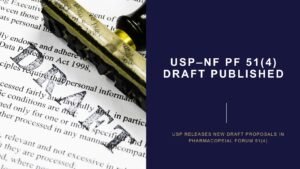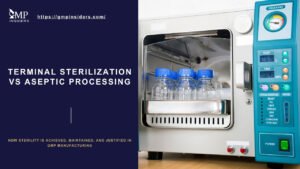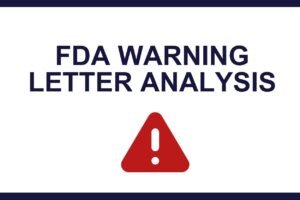Table of Contents
The FDA has released an updated version of its guidance, “Control of Nitrosamine Impurities in Human Drugs” revising its previous recommendations from 2021. This new guidance introduces more detailed measures for pharmaceutical manufacturers to detect, manage, and mitigate the risks associated with nitrosamine impurities—compounds linked to cancer that have been found in several common drugs.
Since the initial discovery of nitrosamine contamination in drugs like ranitidine and valsartan, the FDA has collaborated with global regulators to establish robust guidelines aimed at minimizing nitrosamine levels in pharmaceutical products. The 2024 update reflects the FDA’s latest understanding of nitrosamine formation, introducing stricter protocols and timelines for compliance.
Key Changes in the 2024 Nitrosamine Impurities Guidance
Some of the key changes reflected in the revised guideline include:
1. Focus on Nitrosamine Drug Substance-Related Impurities (NDSRIs)
The most significant update in the 2024 guidance is the introduction of Nitrosamine Drug Substance-Related Impurities (NDSRIs). Unlike general nitrosamines, NDSRIs are specific to the drug’s active pharmaceutical ingredient (API) and can form when APIs interact with nitrosating agents like nitrite impurities present in drug excipients.
What’s new?
- In 2021, the FDA’s guidance primarily addressed small-molecule nitrosamines like NDMA and NDEA, which are unrelated to the API structure. The 2024 guidance expands its scope by identifying NDSRIs, which are unique to each API and form due to interactions within the drug’s formulation.
- The new guidance categorizes nitrosamines into two types: small-molecule nitrosamines (e.g., NDMA) and NDSRIs, which directly relate to the drug substance’s chemical structure.
- NDSRIs require specialized risk assessments tailored to each specific API, given their unique potential to form impurities.
Impact on manufacturers
- Manufacturers must now conduct separate risk assessments for NDSRIs in addition to existing evaluations for small-molecule nitrosamines.
- Since NDSRIs are specific to each API, manufacturers face increased complexity and may need to adopt new testing protocols to detect and control these impurities.
- Identifying and mitigating NDSRIs will demand ongoing collaboration with excipient suppliers to monitor nitrosating agents, as well as investment in more advanced analytical technologies.
2. Revised Acceptable Intake (AI) Limits of Nitrosamine Impurities
The FDA has introduced revised methods for calculating Acceptable Intake (AI) limits for both small-molecule nitrosamines and NDSRIs. The 2024 update emphasizes more sophisticated methods for determining AI limits using the Carcinogenic Potency Categorization Approach (CPCA), allowing for a more nuanced assessment of nitrosamine risks, particularly for NDSRIs that lack comprehensive data.
What’s new?
- The Carcinogenic Potency Categorization Approach is now recommended to calculate AI limits, especially for compounds with limited toxicity data. This method refines the AI levels based on predicted carcinogenicity, ensuring more accurate safety thresholds.
- The updated guidance also introduces flexibility in managing multiple nitrosamines within a single product, allowing manufacturers to combine AI limits for various impurities without exceeding the total cancer risk threshold.
Additional FDA Recommendations for AI Limits
- Predicted CPCA: Recommended AI limits for nitrosamine impurities based on their predicted carcinogenic potency categorization.
- Compound-Specific Data: AI limits based on specific carcinogenicity and mutagenicity data, or derived through read-across analysis from surrogate compounds.
- Interim AI Limits: Recommended interim AI limits for certain nitrosamine impurities when long-term data is unavailable.
Impact on manufacturers
- Manufacturers must recalculate AI limits using the updated approach, which may affect product formulations and require changes in testing protocols to ensure compliance.
- Managing multiple nitrosamines within one product becomes more complex, as companies must track cumulative exposure and adjust specifications accordingly.
3. Introduction of Reformulation Strategies
The FDA’s 2024 guidance places a new emphasis on reformulating drug products to reduce the formation of nitrosamines. Specifically, it offers manufacturers recommendations on adding antioxidants (like ascorbic acid or α-tocopherol) or pH modifiers to prevent NDSRI formation during the drug’s shelf life.
What’s new?
- The 2021 guidance did not detail specific strategies for reformulation. In contrast, the 2024 guidance explicitly recommends that manufacturers use antioxidants or modify the pH in formulations to inhibit nitrosamine formation.
- This update comes from recent research that has shown the ability of certain antioxidants and pH changes to effectively prevent the formation of NDSRIs during drug storage.
Impact on manufacturers
- Manufacturers may need to reformulate existing drug products to include antioxidants or pH modifiers, especially for high-risk APIs.
- Reformulations may require new bioequivalence studies to ensure that the effectiveness and safety of the reformulated product are maintained. However, under certain conditions, the FDA allows for waivers of in vivo bioequivalence testing, provided that appropriate comparative dissolution studies are conducted.
- Reformulation introduces new costs for R&D, along with regulatory hurdles, as manufacturers must submit reformulation changes to the FDA for review.
4. Expanded Risk Assessment and Testing Requirements for Nitrosamine Impurities
The updated guidance emphasizes a more comprehensive and periodic risk assessment process. Manufacturers are now expected to evaluate both small-molecule nitrosamines and NDSRIs, with additional requirements for testing under different conditions, such as during manufacturing and storage.
What’s new?
- The expanded risk assessment now covers NDSRIs in addition to traditional nitrosamines, meaning manufacturers must assess potential risks during the entire lifecycle of the product, from synthesis to storage.
- The FDA recommends regular periodic re-assessments, especially when there are changes in manufacturing processes or the introduction of new raw materials or excipients.
FDA Recommendations on Testing Methods
- Analytical Methods: The 2024 guidance includes recommended analytical methods for confirmatory testing of nitrosamine impurities, ensuring the accuracy and reliability of the results.
- Safety Testing: The FDA provides updated safety testing methods for identifying potential risks posed by nitrosamine impurities during product development.
Impact on manufacturers
- This update requires manufacturers to implement a more stringent testing regime, including confirmatory testing on representative batches and stability studies.
- Risk assessments are no longer a one-time requirement; manufacturers must continuously monitor their products throughout their lifecycle, leading to potentially higher costs and extended testing protocols.
Broader Impact on the Pharmaceutical Industry
The 2024 guidance significantly raises the bar for controlling nitrosamine impurities, especially with the inclusion of NDSRIs. The FDA’s focus on these impurities underscores its commitment to ensuring the highest safety standards in pharmaceuticals, given the potential carcinogenic risks posed by these compounds.
- Global Collaboration: The FDA’s updated guidance is aligned with international regulators, including the European Medicines Agency (EMA) and Health Canada, facilitating a coordinated global approach to controlling nitrosamine contamination.
- Increased Scrutiny: Pharmaceutical companies can expect more rigorous inspections and greater regulatory scrutiny regarding their processes, particularly concerning the handling of at-risk APIs and excipients that may contribute to nitrosamine formation.
- Costs and Innovation: While the increased testing and reformulation requirements may raise costs for manufacturers, they also present an opportunity for innovation in drug formulation and manufacturing processes, as companies develop new ways to mitigate nitrosamine risks.
Conclusion
The FDA’s 2024 update on nitrosamine impurities introduces a new layer of complexity for pharmaceutical manufacturers, but it also provides clearer guidelines for addressing emerging risks such as NDSRIs. With more precise methods for calculating acceptable intake limits, new reformulation strategies, and a comprehensive risk assessment framework, the industry now has the tools to ensure the safety of drug products while minimizing nitrosamine contamination.
As the industry works towards meeting the updated standards, pharmaceutical companies must stay proactive in adapting their processes to meet the evolving regulatory landscape, ensuring that their products remain safe and compliant.















